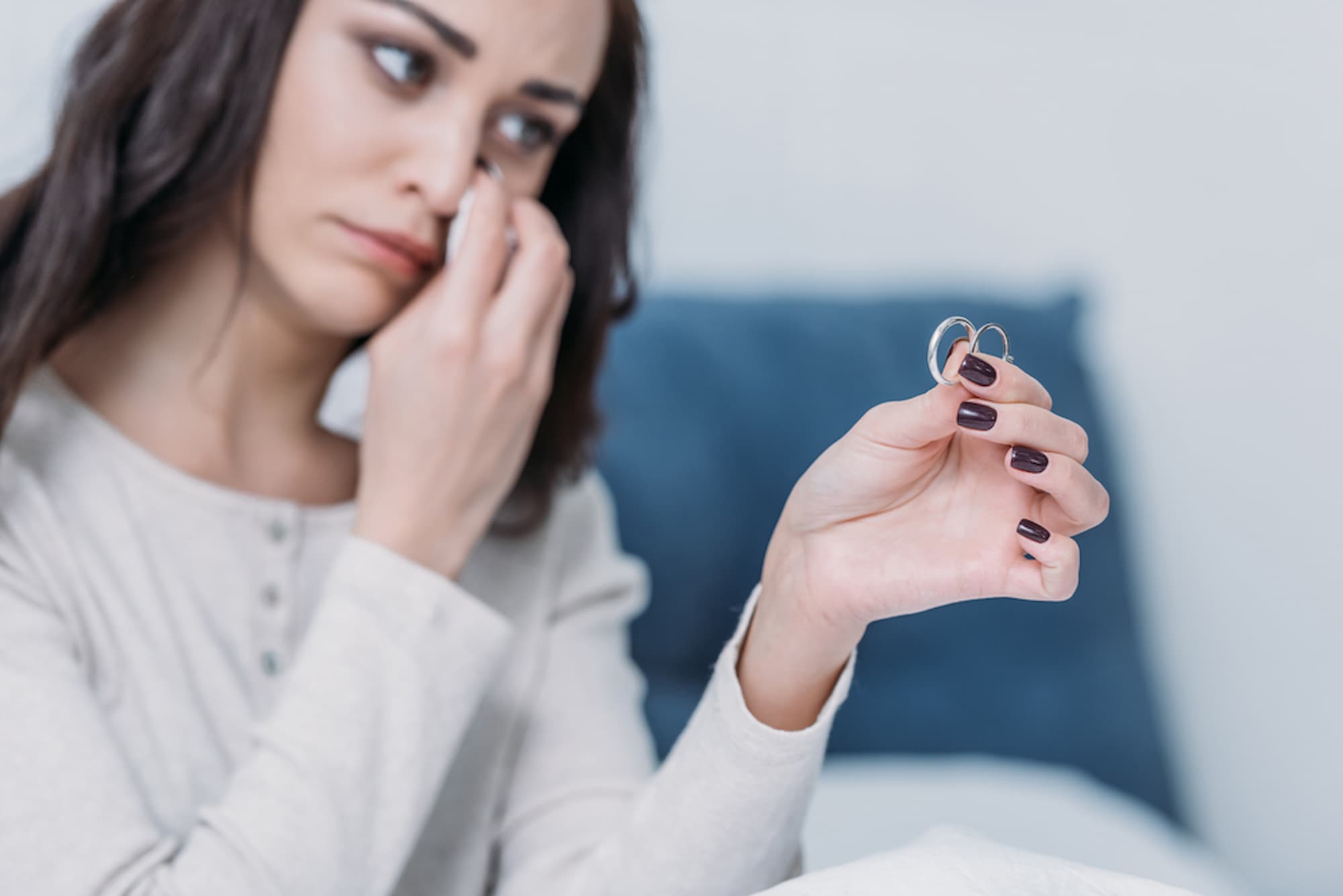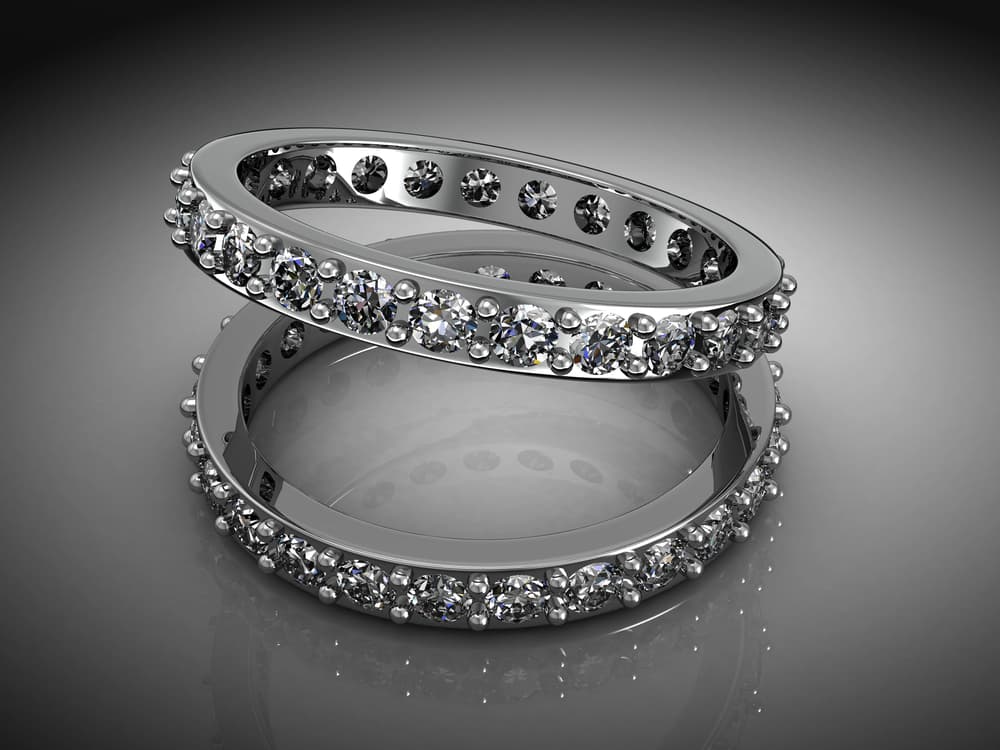Anxiety rings are small pieces of jewelry designed to help people manage anxiety and stress. These rings usually have a movable part that you can spin or fidget with. But, do anxiety rings work?
In this piece, we will look closer at how anxiety rings work, their benefits, and some other ways to relieve anxiety. Read on to explore more.

Anxiety rings, also known as fidget rings or spinner rings, are small, discreet pieces of jewelry designed to help individuals manage anxiety and stress.
They typically feature a movable component, such as a spinning outer band, that users can manipulate with their fingers.
These rings are designed to provide a calming effect and help redirect nervous energy or anxiety into a repetitive, soothing motion.
Anxiety rings work by providing a tactile and kinetic outlet for anxiety and stress. The movable parts of the ring allow users to engage in repetitive motions, such as spinning or rotating the outer band, which can help in focusing attention and reducing feelings of nervousness or agitation.
This physical action can promote a sense of relaxation and mindfulness by occupying the hands and providing a comforting sensation.
Many individuals find anxiety rings beneficial in managing anxiety symptoms discreetly in various settings.
Anxiety rings come with a handful of benefits for individuals seeking to manage anxiety and stress. Here are detailed reasons why they can be effective tools:
1.Calming Effect: The primary benefit of anxiety rings is their ability to provide a calming effect. The repetitive motion of spinning or fidgeting with the ring can help soothe nerves and reduce feelings of anxiety. This physical action engages the senses and redirects anxious energy into a controlled, repetitive movement.
2.Stress Reduction: Manipulating an anxiety ring can help alleviate stress by promoting relaxation and mindfulness. By focusing on the tactile sensation and the motion of the ring, users can momentarily distract themselves from stressful thoughts or situations. This can lead to a reduction in overall stress levels and a sense of emotional balance.
3.Enhanced Focus and Concentration: For individuals with anxiety or attention disorders, anxiety rings can improve focus and concentration. The act of fidgeting with the ring provides a sensory experience that can help maintain attention during tasks or activities that require mental engagement.
4.Discreet and Portable: One of the significant advantages of anxiety rings is their discreet nature and portability. They can be worn inconspicuously on fingers, making them accessible whenever needed, whether at work, school, or in public settings. This accessibility allows individuals to manage anxiety discreetly without drawing attention to themselves.
5.Promotes Mindfulness: Using an anxiety ring encourages mindfulness by anchoring attention to the present moment. The repetitive motion fosters a meditative-like experience where users can focus on the tactile sensation and movement of the ring. This mindfulness practice can help reduce racing thoughts and promote a sense of grounding and awareness.
6.Non-Disruptive Coping Mechanism: Unlike some other forms of stress relief, such as tapping or clicking noises, anxiety rings provide a silent and non-disruptive coping mechanism. They allow individuals to manage anxiety without causing disturbance to others, making them suitable for environments where noise or distraction may be a concern.
7.Versatile Design Options: Anxiety rings come in various designs, materials, and styles to suit personal preferences and individual needs. Some rings feature smooth spinning bands, while others incorporate textured surfaces or additional sensory elements like beads or stones. This diversity allows users to choose a ring that not only serves as a functional tool but also resonates aesthetically and emotionally.
8.Positive Outlet for Energy: Fidgeting with an anxiety ring offers a positive outlet for excess energy and nervous tension. Instead of engaging in less constructive behaviors like nail-biting or pacing, users can redirect their physical restlessness into a purposeful and controlled action. This can contribute to a sense of self-control and empowerment over anxiety symptoms.
But the question still remains: do anxiety rings really work?

Do anxiety rings really work? Anxiety rings and similar coping tools can assist in managing symptoms of anxiety by providing a tactile distraction and promoting relaxation.
However, they are not a cure for anxiety. Much like self-care practices and grounding techniques, anxiety rings help individuals cope with immediate feelings of anxiety without addressing the underlying causes.
It's important to view these tools as part of a holistic approach to managing anxiety, which may also include therapy, medication, or other treatments tailored to individual needs.
There are several alternative methods to relieve anxiety beyond using anxiety rings:
1.Breathing Exercises: Deep breathing exercises can help calm the mind and reduce anxiety symptoms. Techniques like diaphragmatic breathing or box breathing are effective in promoting relaxation.
2.Mindfulness and Meditation: Practices such as mindfulness meditation cultivate awareness of the present moment and can reduce anxiety over time. Mindfulness techniques encourage acceptance and non-judgmental awareness of thoughts and feelings.
3.Physical Activity: Regular exercise is known to reduce anxiety by releasing endorphins and promoting overall well-being. Activities like yoga, jogging, or dancing can be particularly beneficial.
4.Therapy and Counseling: Cognitive-behavioral therapy (CBT) and other forms of therapy can provide tools and strategies to manage anxiety effectively. Professional guidance can help individuals understand and address the root causes of their anxiety.
5.Healthy Lifestyle Choices: Eating a balanced diet, getting enough sleep, and avoiding excessive caffeine and alcohol can contribute to overall mental health and reduce anxiety symptoms.
6.Social Support: Connecting with friends, family, or support groups can provide emotional support and reduce feelings of isolation or anxiety.
7.Relaxation Techniques: Techniques such as progressive muscle relaxation, visualization, or aromatherapy can help relax the body and mind, promoting a sense of calm.
Anxiety rings can be a helpful tool for managing anxiety and stress.
So, do anxiety rings work? It might be worth trying one to see if it helps you. Remember, there are also many other ways to relieve anxiety, such as breathing exercises, physical activity, and seeking support from friends or professionals.
Anxiety rings, like fidget rings or spinner rings, can benefit individuals with ADHD by providing a tactile outlet. The repetitive motion helps improve focus and reduce restlessness during tasks requiring concentration.
To use an anxiety ring effectively, wear it and engage with its movable parts, such as spinning or rotating the outer band. Use it when feeling anxious or stressed to redirect focus and promote calmness. Experiment with different ways of using the ring to find what works best for you.
Generally safe, anxiety rings may cause mild discomfort or skin irritation with excessive use. Use them moderately and watch for any signs of irritation. They're helpful for managing anxiety but not a replacement for professional treatment for severe anxiety or related conditions.
Explore the pros and cons of meteorite rings, their unique symbolism, tips on choosing the best one, and various design options to consider.
Read MoreLearn the fascinating history of wedding rings, from their ancient origins and evolution through the ages to the latest modern trends and innovations.
Read MoreWhat does a wedding ring symbolize? Find out here and explore different types of wedding rings, how to wear them, and care tips to keep your ring beautiful and lasting.
Read MoreDo silicone rings stretch? Understand their flexibility with our guide, explore how much they can expand, why stretching might be beneficial for you and more.
Read More